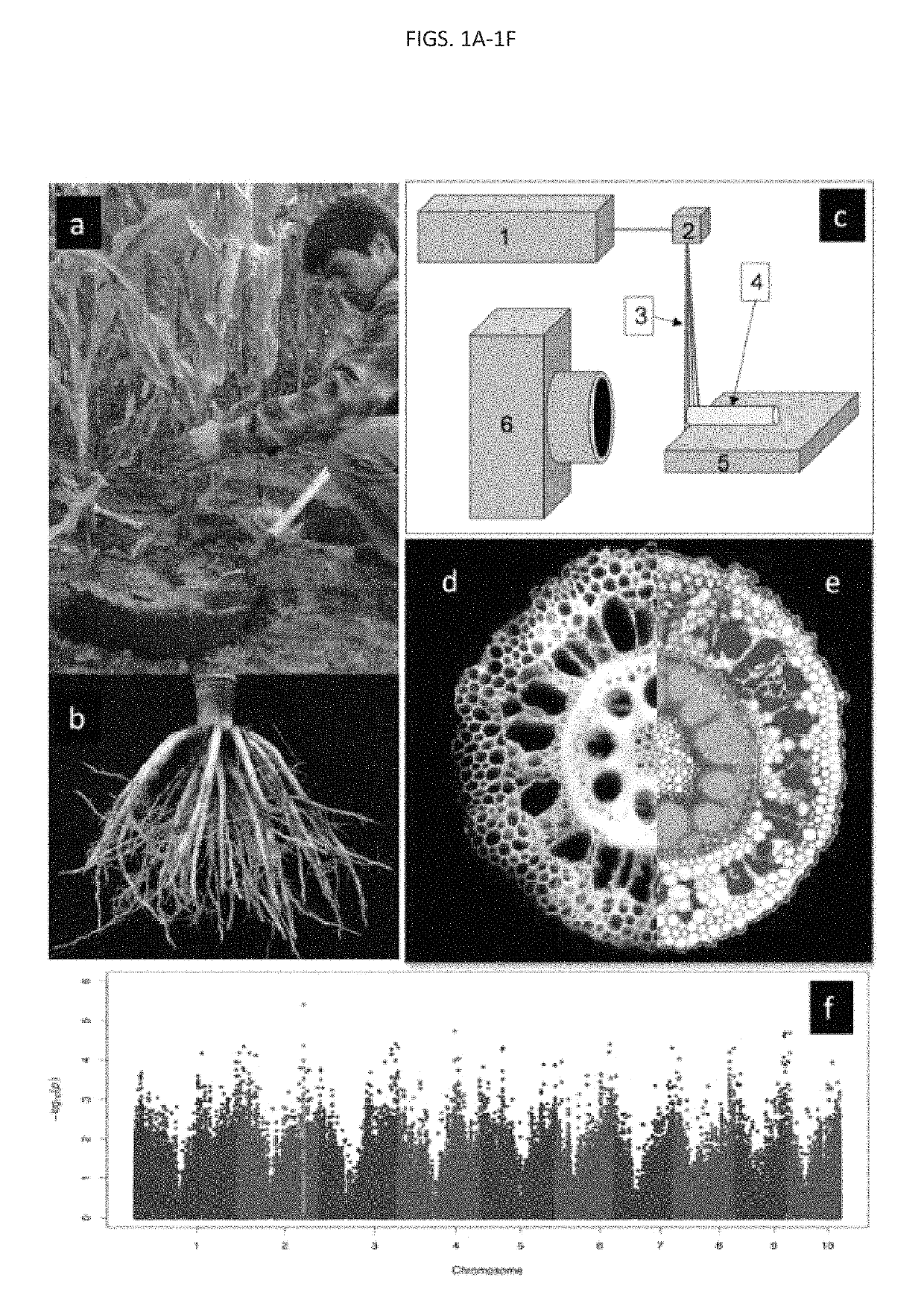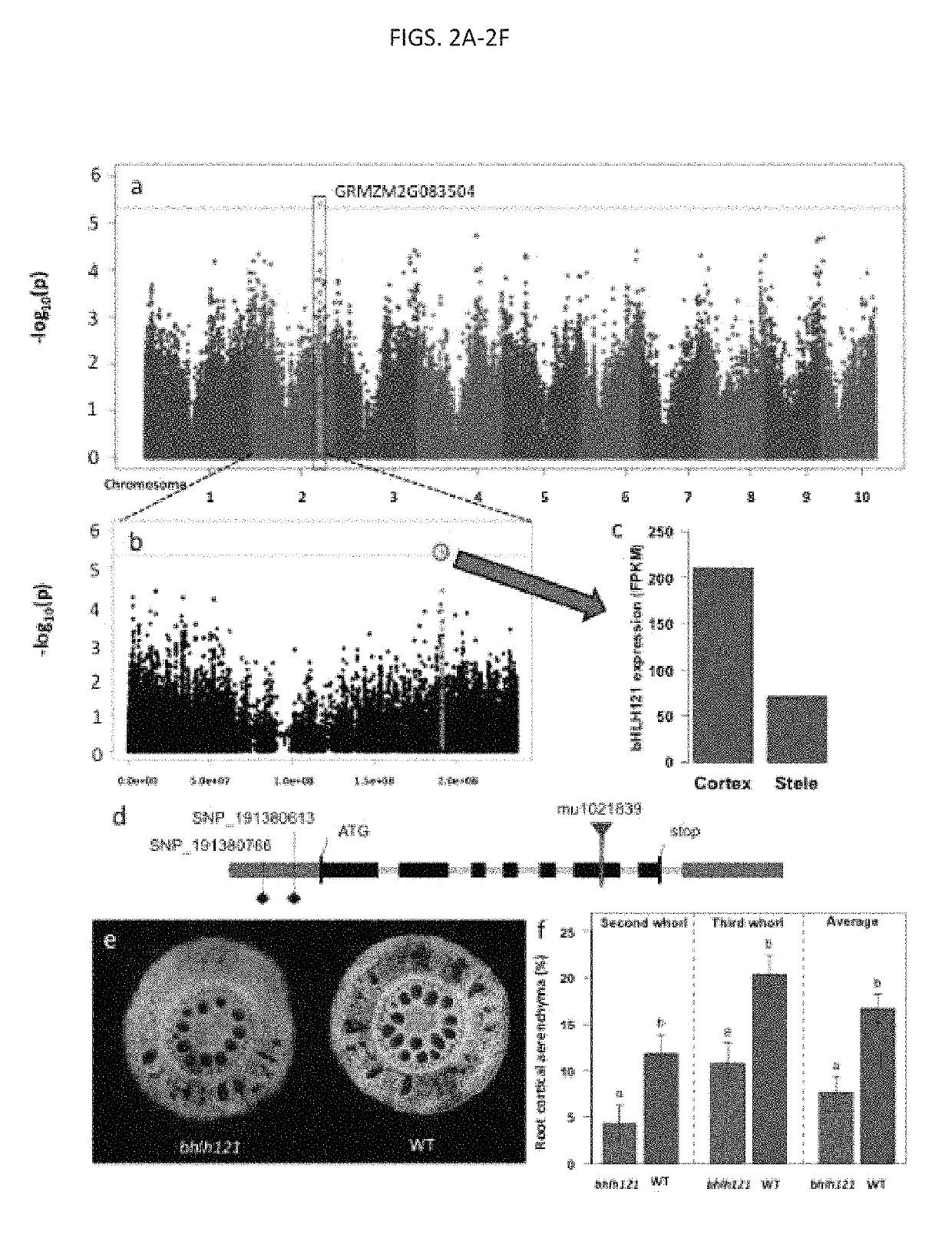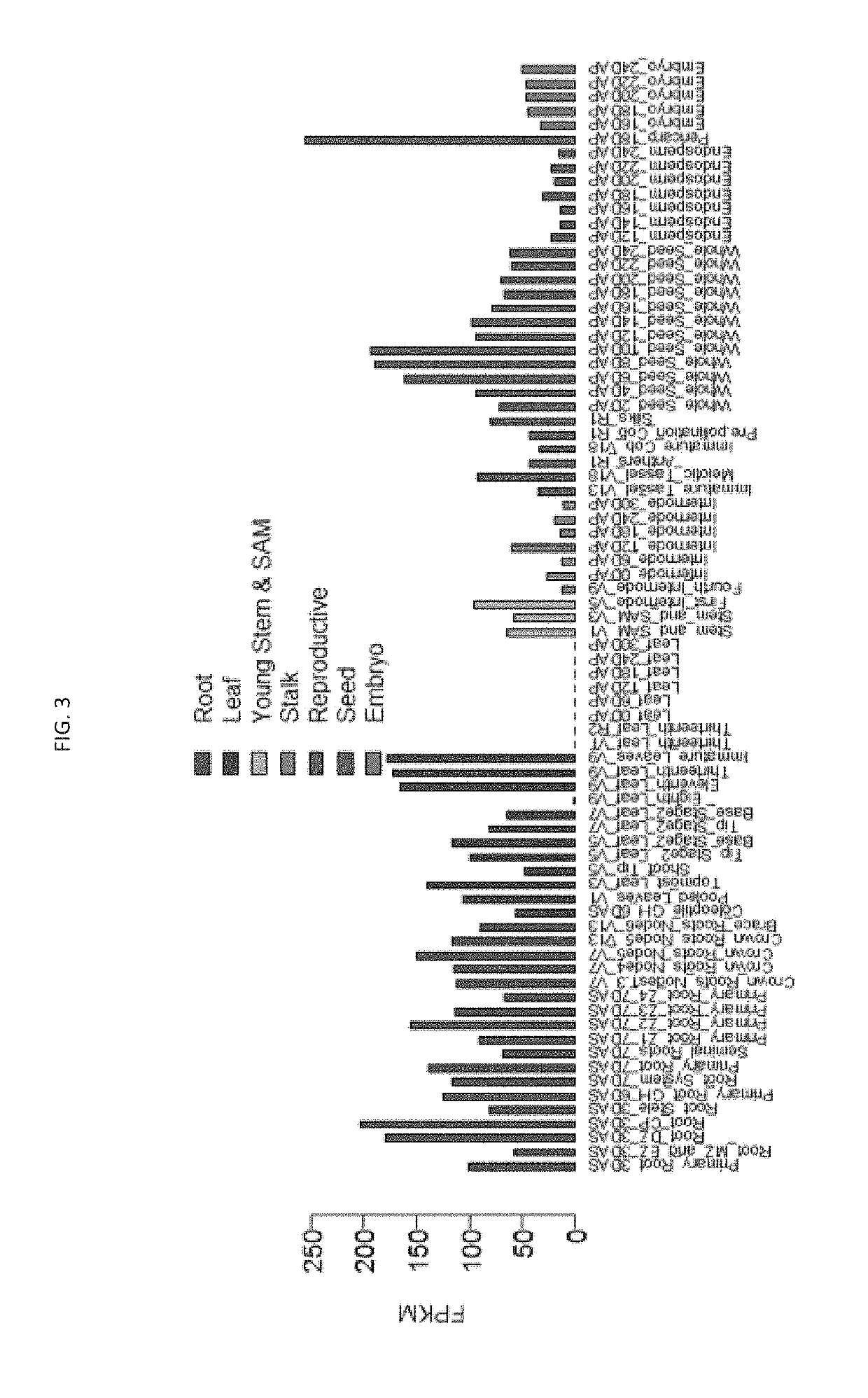Targeted modification of maize roots to enhance abiotic stress tolerance
a technology of abiotic stress tolerance and targeted modification, applied in the field of crop breeding, can solve the problems of limited availability of water and nutrients, limited crop production, environmental degradation, etc., and achieve the effects of less carbon cost, less metabolic cost, and more effective root systems
- Summary
- Abstract
- Description
- Claims
- Application Information
AI Technical Summary
Benefits of technology
Problems solved by technology
Method used
Image
Examples
example 1
Modification of Maize Root Cortical Aerenchyma to Enhance Abiotic Stress Tolerance
Anatomics: A High-Throughput Phenotyping Approach for Plant Anatomical Traits
[0076]Growth of maize root systems in the soil profile can determine their ability to acquire water and nutrients, and also provide anchorage of the plant. Roots that are complex and highly branched have improved acquisition of immobile nutrients such as phosphorus. Roots that are thick and grow deep in the soil acquire water and nutrients more efficiently providing drought tolerance and nitrogen acquisition efficiency. In addition to the value of roots for anchorage and abiotic stress tolerance, the Department of Energy has estimated that increasing root depth in maize by 50% can result in capture of 5 to 10 year-equivalents of US carbon emissions due to the reduced breakdown of plant tissue at depth and the large acreage of maize produced each year.
[0077]Anatomical variation represents an underexploited source of traits for ...
PUM
| Property | Measurement | Unit |
|---|---|---|
| pH | aaaaa | aaaaa |
| Tm | aaaaa | aaaaa |
| temperature | aaaaa | aaaaa |
Abstract
Description
Claims
Application Information
 Login to View More
Login to View More - R&D
- Intellectual Property
- Life Sciences
- Materials
- Tech Scout
- Unparalleled Data Quality
- Higher Quality Content
- 60% Fewer Hallucinations
Browse by: Latest US Patents, China's latest patents, Technical Efficacy Thesaurus, Application Domain, Technology Topic, Popular Technical Reports.
© 2025 PatSnap. All rights reserved.Legal|Privacy policy|Modern Slavery Act Transparency Statement|Sitemap|About US| Contact US: help@patsnap.com



